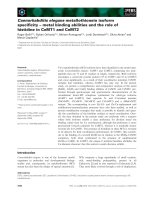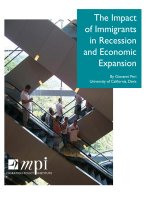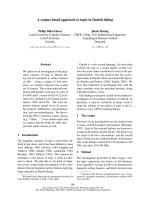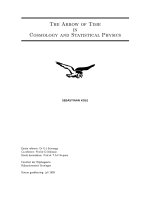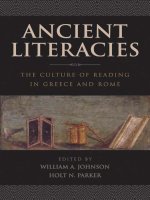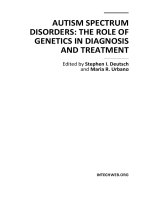The gulf of mexico oil spill a corpus based study of metaphors in british and american media discourse 6 3
Bạn đang xem bản rút gọn của tài liệu. Xem và tải ngay bản đầy đủ của tài liệu tại đây (52.55 KB, 3 trang )
295
6.4 Summary
Semino & Masci (1996, p.263-264) make an astute claim that
“quantitative data do not bear a straightforward relationship to the impact that
particular metaphors may have on public opinion”. This is due to the fact that
metaphors may appear in more or less salient positions within the broadsheet
or be unevenly publicized across a range of mainstream media or social media,
thus affecting the reach of the metaphor. Semino & Masci also rightly point
out the unavoidable bias where the level of media interest accorded to key
actors and public personalities results in a situation where a particular
statement (and its relevant metaphorical implications) may be highlighted by
the press and quoted widely across the entire spectrum of traditional news
media (headlines and texts) as well as across a range of social media. Hence,
the salience of a metaphor is not merely quantified empirically, but has to be
taken in tandem with a range of factors such as attribution to key public
figures and editorial ideological concord. Thus, while the detailed analysis
done thus far in this thesis is based on empirical principles, it is not able to
predict and take into account the cumulative power of these myriad factors of
influence.
Furthermore, it must not be forgotten that impartiality in the news is
never a legal requirement and often comes in a distant second to market forces.
Bell’s (1991, p.105) principle of “audience design” clearly states that a
newspaper will construct a world-view or an evaluative stance that is in accord
with the editorial political and philosophical affiliations and with the majority
of their target audience. Ultimately, this results in an ethnocentric world-view
296
with a generic system of shared values and metaphorical evaluations. It is
these particular sets of metaphorical evaluations and group ideologies that
result in the potential socio-economic manipulation of the readers’ perceptions
of “us” vs. “them”. Thus, this thesis highlights the dangers inherent in the use
of metaphors as a deliberate strategy for the influencing aggregate perceptions
and behaviour, advocating a critical approach to the study of metaphors in
discourse.
Finally, it is also important to note that modern consumers of news
texts are assailed by a gamut of alternative discourses outside traditional news
media. This is especially so with the increased proliferation of social media
(political blogs, interest-group chat-rooms, social media websites that facilitate
interaction with a range of viewpoints, online broadsheets with an interactive
comments function). This clearly goes to show how our values and what we
actually perceive are fashioned by the discourses that we are socialized into.
Hence, it is important to temper the strengths of the claims in this thesis
pertaining to the influence of metaphor in discourse, as media consumers
cannot be merely seen as passive recipients of editorial ideological input.
Furthermore, it has also been established that the pattern of evaluative stances
identified in this thesis generalisable only to the scope of these corpora. In
conclusion, it is hoped that the discussions put forth in this thesis show that the
critical study of metaphors in media discourse is one that addresses the
complexities inherent in real data. These complexities include editorial
ideological concord, attribution to key figures, positional salience on the actual
broadsheet/ webpage and the aggregate effect of multiple discourses on the
297
reader’s final stance. All these are factors worthy of further, more systematic
investigation.


